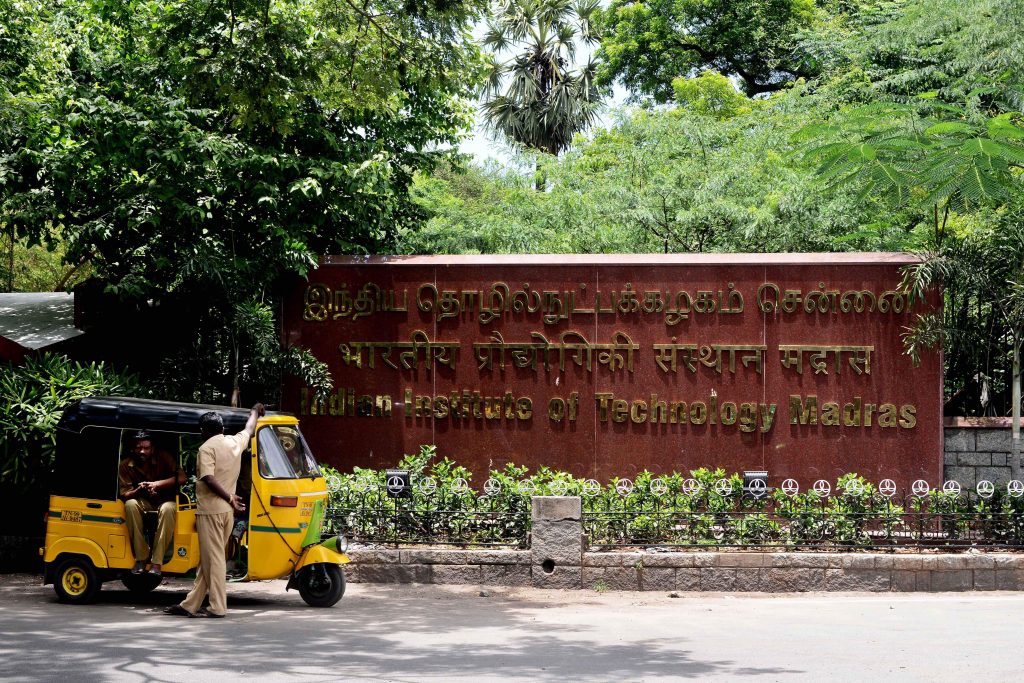
Students typically react to the high-pressure environment in two ways—they either get extremely competitive or go into a depressive phase. Those unable to cope become vulnerable
Suspected cases of suicide in Indian Institutes are becoming a matter of concern. The IIT-Madras campus was rocked by the death of a postgraduate student recently. Just before, the suspected suicide of a first year IIT-Mumbai had sent alarm bells ringing. While a student was found hanging in a hostel room at the IIT Madras in Chennai on April 21, 2023, on April 1, a 32-year-old Ph.D student of IIT-Madras from West Bengal, allegedly died by suicide in his room. In March, a third-year student, who was a resident of Andhra Pradesh, died by suicide on the campus. In February, a research scholar from Maharashtra was found hanging in his room.
In December 2021, the Lok Sabha was informed that 122 students of such institutes had taken the extreme step during 2014-21. In December 2021, Education Minister Dharmendra Pradhan had informed the Lok Sabha that 122 students of such institutes (including IITs, IIMs, NITs, NITIEs and Central Universities) had died by suicide during 2014-21. Six students, three each from IITs and the National Institute of Technology, died by suicide in 2023. Eight IIT students died by suicide in 2022, four in 2021 and three in 2020.
According to data from the National Crime Records Bureau (NCRB), student suicides saw a rise of 4.5 per cent in 2021. The statistics have pointed to boys and girls being driven to ending their lives even earlier — while receiving coaching for admission to IITs, etc. Reasons could be the pressure of studies, stiff competition and ragging or discrimination. But the pressures of IIT life are clearly telling.
V Vaipu Pushpak Sree Sai, 20, a third-year B.Tech student from IIT Madras, died by suicide on March 14 in his hostel room. This was the second such incident on the campus in one month. Stephen Sunny, an MS Research Scholar, had died by suicide on February 13. A day earlier, a first-year student Darshan Solanki had died by suicide on the IIT Mumbai campus. Mystery still shrouds the death of Darshan Solanki, an 18-year-old B.Tech student of the Indian Institute of Technology (IIT), Bombay – who died after a fall from the seventh floor of his hostel building in Mumbai’s Powai on Sunday. Solanki hailed from Ahmedabad. Though the police have registered a case of accidental death, a student group on the IIT Bombay campus alleged on social media he was driven to suicide. The deceased had enrolled three months ago and his first semester exams concluded on Saturday.
Why has this been happening?
Students opine, “An IIT campus can isolate you very easily. The culture inside the campus itself is very exclusive. Academia has its own problems and students with a strong social and economic background can cope with them easily, while others can’t.” “IITs sell merchandise including T-shirts that say ‘born to be an IITian’, becoming an IITian must be dependent on one’s education and not birth,” say students.
“Academic stress, family and personal reasons and mental health issues are some of the reasons for such suicides,” Subhas Sarkar, the Union Minister of State for education, told Parliament on March 27. His statement came while disclosing a grim statistic: 33 students had died by suicide on IIT campuses since 2018. With two more added to this horrific tally in April, this number was one higher than the 34 students in the country’s 23 IITs who died by suicide in the eight years between 2014 and 2021, another revelation that came on the floor of Parliament on December 20, 2021. And this is excluding the unsuccessful suicide attempts. On February 13, a first-year B.Tech. student attempted to kill himself at IIT Madras, the very day that Stephen Sunny, a second-year MS research scholar in Electrical Engineering, ended his life in his hostel room.
From high societal expectations for academic performance, peer pressure, inability to cope with the rigorous schedules, language barriers, increasing class sizes, caste discrimination, little personal connect with faculty to poor outreach by on-campus counsellors, a whole host of factors may contribute to the spike in suicidal tendencies. Students typically react to the high-pressure environment in two ways—they either get extremely competitive or go into a depressive phase. While those with strong social and economic support systems find it easier to deal with the ecosystem, others are more vulnerable.
Then there is an 85% attendance rule and if you fail to meet this requirement, you have to repeat the course. The institutes are arbitrary in applying the rule. Then most of those who come to the IITs have been through coaching centres where they are taught to solve the problems mechanically. In the formative years of their teens, they neither get any societal exposure nor build relationships of any kind, not even with their closest family members. In short, they have no internal mechanism for emotional support. In stress, they have no one to fall back on.”
Crowd of toppers
Nearly all the students who land up at the IITs are used to being toppers—in their schools and in the neighbourhood. When they come to the IITs, they find themselves in a crowd of toppers, where they are one among many and not necessarily the top of the pack. Many come from vernacular medium schools and find it difficult to grasp tough concepts as the medium of instruction is mostly English. They start clocking poor grades, have high backlogs and fear that they will not live up to the high hopes everyone places on them.
Eventually some students stop socialising with friends after getting backlogs in his semesters. Campus placements are another time when the morale of students who don’t get placed on so-called high packages takes a beating. Those with a vernacular background are allegedly discriminated against. Concerned with the grim situation, all courses at IITs have now been introduced in regional languages to reduce stress among the students who had studied in vernacular-medium backgrounds.
The way out
As a part of this initiative, the All India Council for Technical Education has released the complete syllabus of 12 different technical courses in regional languages. The institutions are also focusing on extracurricular activities, including sports and cultural programmes, and assign one faculty advisor per 10 students to help with their academics and monitor the progress. Students, wardens and caretakers are sensitised to alert the authorities to signs of depression in fellow students so that timely clinical consultation can be provided. Rattled by the increasing incidents of suicide, several IITs are taking preventive measures such as counselling and mentorship for students with low grades and backlogs in their course loads, reducing the curriculum requirements and creating a positive environment on the campuses.
Most mental health experts suggest that IITs should have longer induction schedules before regular courses begin so that students from diverse backgrounds get enough time to adjust to campus life. The IITs across the country have set up counselling cells to help students deal with their mental health problems but these cells have not been functioning at their full capacity, say different sources. Students say, “The counselling cell is a joke. In one IIT, we have three full-time counsellors for ten thousand students and people who have gone to them say that they don’t have caste and gender sensitization.”












